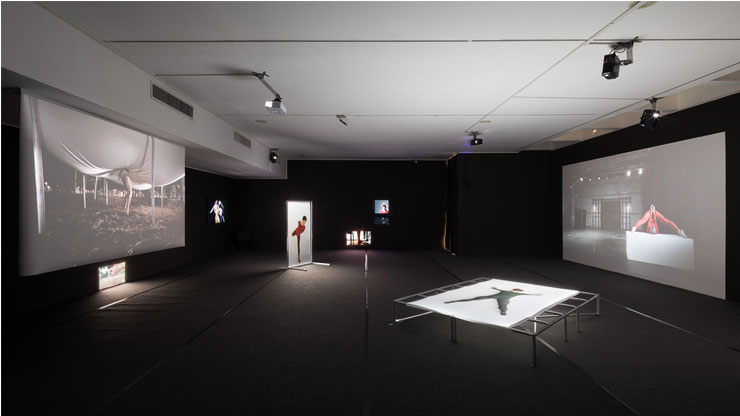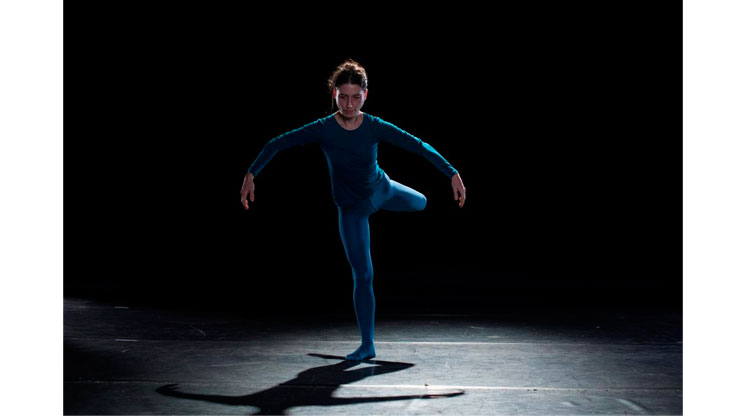
Heda Oren was born in Netanya and lived on Kibbutz Ashdot Yaakov from an early age until she died. She studied dance at L’École Supérieure d’Études Chorégraphiques in Paris, and took lessons with, among others, choreographers Murray Louis and Alwin Nikolais in New York. At the peak of her artistic career, from the 1970s to the mid-1980s, Oren was among the first choreographers to create dances for the Kibbutz Contemporary Dance Company; worked with the Batsheva 2 Dance Company; and created dances for the dancer Ruth Eshel. In 1975 she opened a center for dance studies in the Jordan Valley, which she headed for many years, and endeavored to establish an independent, professional dance company based in this region. Over the years she also created dances for her kibbutz’s holiday ceremonies, seeking to combine her artistic aspirations with her commitment to community life and to breathe new artistic life into Jewish traditions.
Oren’s career was characterized by constant oscillation between center and periphery, as she struggled to make her place as a creator and develop professionally while living on a kibbutz. This movement reverberates in her works, too, in the constant tension of bodily presence that fluctuates between contraction and expansion, as well as in the tension between, on the one hand, a search for the “odd movement,” as she called it, informed by remoteness and lack of belonging, and, on the other, a quest for foundation and anchoring. Her works are characterized by a formal exploration of movement that engages with the body’s autonomy and universal aspects. At the same time, however, they regard the body as planted within a particular cultural and social context that endows it with meaning, enabling yet constraining its movement.
Rethinking Broken Lines offers a new look at Oren’s oeuvre as seen through the prism of the artistic practice developed by Ben Ari over the past years. Born on Kibbutz Yagur, Ben Ari’s works engage, through a visual exploration, with the presence of the feminine body in the collective space. She pursues questions of discipline and resistance in the relationship between the female body and the space that both gives it form and is formed by it. Ben Ari’s images in diverse media transpire between movement and stillness, placing the (mostly feminine) body in physical postures that are almost impossible to maintain. These postures demand from the body constant, superb effort, flexibility, containment, endurance, and balance, often involving pain and self injury. Her videos are looped, thereby capturing the body’s arrested pose in a neverending duration, exposing the relentlessness of the effort while manifesting ambivalence between compliance and defiance, virtuosity and torture.
The video installation fuses together elements from the bodies of work produced by both Oren and Ben Ari. It is composed of several screenings scattered around the space, some of which are projected on papers fastened by metal constructions. The screened images show dancers holding postures extracted from Oren’s choreographies or inspired by them. Their screened, almost life-size bodies are supported by the constructions and assimilated into the two-dimensional fragility of the paper.
Just as Oren had worked with contemporary musicians and explored the relationship between sound and movement not merely as soundtrack but as stage presence, so has Ben Ari collaborated in this project with composers Yoni Niv and Alex Ness. Echoing the nearly static movement in space, the sound they composed is based on pausing on a single note and exploring its vibrations. The image of Shira Legmann, the pianist performing the musical piece, is integrated into the screenings.
Together, the postures and sounds make up a new spatial choreography that conjoins visual art and dance, with their different modes of composition and conditions of viewing. Moving around the space, the spectators assemble the subtle, fragmented movements performed by the dancers in the images strewn across the space. In doing so, their own presence becomes an additional element in the composition, altering it and conferring further meaning on it.

Less Reading...

